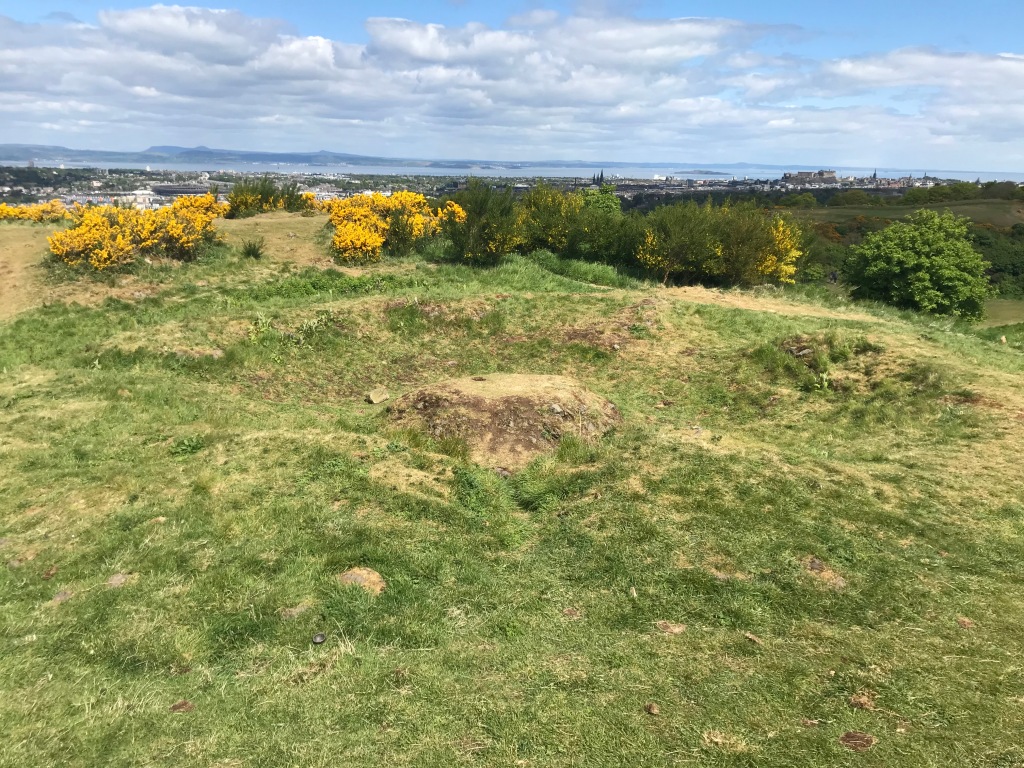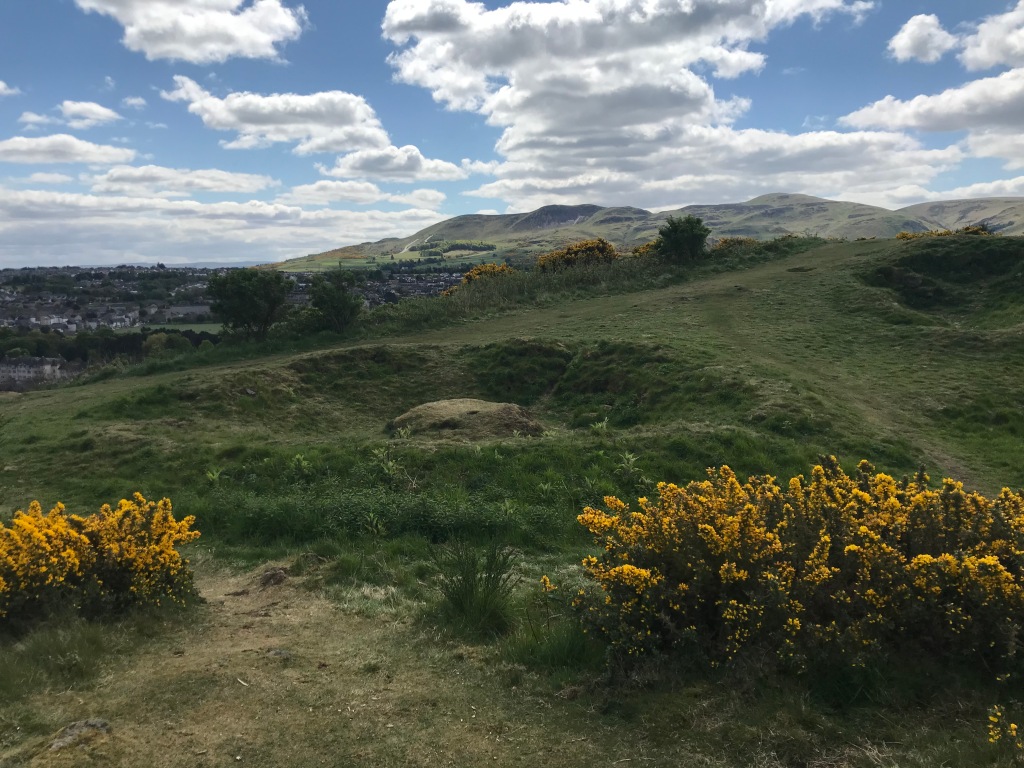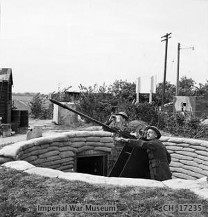During my daily lockdown exercise in March 2020 I came across the remains of three gun platforms which were installed as a defence against airborne attack on the summit of West Craiglockhart Hill aka Wester Craiglockhart. This blog sets out the historical context that resulted in their installation and some information about the type of gun that may have been located there.

When were the guns built?
When looking over Edinburgh from Craiglockhart Hill on a sunny day it is hard to believe that this beautiful city was the subject of violent assault from Zeppelins in the First World War and multiple assaults from the Luftwaffe in the Second World war. The threat and reality of this airborne menace necessitated the development of a defensive response. The gun platforms on Wester Craiglockhart hill are the physical remains of this response. So when were they built? Information held on the website at Historic Environment Scotland states the gun platforms are of unknown date. A leaflet produced by the Edinburgh Geological Society states that the battery was built following the Zeppelin attach in 1916 http://edinburghgeolsoc.org/downloads/rigsleaflet_craiglockharta4.pdf. The more likely date of the guns (in my opinion!) would be the second world war when extensive air defences were installed in Scotland supported by numerous airfields.

Death from Above!
On Sunday the 2nd of April 1916 a warning came through to Edinburgh that an airborne attack was approaching the city comprising two German airships. Over the following night 24 bombs were dropped on Leith and the City of Edinburgh. In addition to Leith Docks bombs were dropped in the Grassmarket (outside the Whitehart pub), The County Hotel on Lothian Road, Marshall Street, Newington where 5 residents were killed and George Watsons College where a high explosive bomb exploded in the grounds shattering the windows in the building. An excellent account of the raid is included in the National records of Scotland website: https://www.nrscotland.gov.uk/research/learning/first-world-war/zeppelin-air-raid-on-edinburgh-1916 . In this account air raid precautions are mentioned which largely involve blackout measures and no mention is made of anti aircraft guns.

Hitler flexes his muscles!
At the beginning of the second world war Scotland was a strategic target for the Luftwaffe with coal mines, factories, naval bases and, crucially, shipyards. Six weeks into the conflict the first air raid on British soil targeted the Firth of Forth. A number of ships were damaged including HMS Edinburgh. The Forth rail bridge was narrowly missed. Anti aircraft guns were used in anger for the fist time and spitfires from 603 Squadron ‘City of Edinburgh’ were scrambled and managed to shoot down the first enemy aircraft over Britain. The 36th (Scottish) Anti-Aircraft Brigade was formed on the 1st May 1938 in Edinburgh and was responsible for the defence of the City of Edinburgh and the Firth of Forth.

The Craiglockhart Battery
Three earthworks are visible at the summit of Wester Craiglockhart. These comprise circular depressions about 8 meters in diameter with a central block of stone protruding. Two of these are particularly well preserved. The central stone is likely to have served as the base for an anti aircraft gun allowing for a 360 degree rotation and field of fire. The edges of the circular depression were probably enhanced with a wall of sandbags or other defence.
The Bofors 40mm gun was one of the more common anti aircraft gun in use at this time however a number of other guns could have been installed at Craiglockhart. The Bofors Gun fired 2lb high explosive shells at a rate of up to 120 rounds per minute. It was one of the most popular medium weight anti aircraft guns used by the British military in World War 2 so would be a likely candidate for Craiglockhart Hill.

A selection of other types of guns could have been used at Craiglockhart also.





